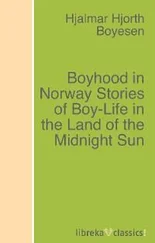George Bacon - Siam - The Land of the White Elephant as It Was and Is
Здесь есть возможность читать онлайн «George Bacon - Siam - The Land of the White Elephant as It Was and Is» — ознакомительный отрывок электронной книги совершенно бесплатно, а после прочтения отрывка купить полную версию. В некоторых случаях можно слушать аудио, скачать через торрент в формате fb2 и присутствует краткое содержание. ISBN: , Жанр: foreign_antique, foreign_prose, Путешествия и география, на английском языке. Описание произведения, (предисловие) а так же отзывы посетителей доступны на портале библиотеки ЛибКат.
- Название:Siam : The Land of the White Elephant as It Was and Is
- Автор:
- Жанр:
- Год:неизвестен
- ISBN:http://www.gutenberg.org/ebooks/38078
- Рейтинг книги:3 / 5. Голосов: 1
-
Избранное:Добавить в избранное
- Отзывы:
-
Ваша оценка:
- 60
- 1
- 2
- 3
- 4
- 5
Siam : The Land of the White Elephant as It Was and Is: краткое содержание, описание и аннотация
Предлагаем к чтению аннотацию, описание, краткое содержание или предисловие (зависит от того, что написал сам автор книги «Siam : The Land of the White Elephant as It Was and Is»). Если вы не нашли необходимую информацию о книге — напишите в комментариях, мы постараемся отыскать её.
Siam : The Land of the White Elephant as It Was and Is — читать онлайн ознакомительный отрывок
Ниже представлен текст книги, разбитый по страницам. Система сохранения места последней прочитанной страницы, позволяет с удобством читать онлайн бесплатно книгу «Siam : The Land of the White Elephant as It Was and Is», без необходимости каждый раз заново искать на чём Вы остановились. Поставьте закладку, и сможете в любой момент перейти на страницу, на которой закончили чтение.
Интервал:
Закладка:
"But their posterity, under the leadership of Bathămăràt, erected the city Săvănthe vălôk, or Sangkhălôk, about the year 300 of the era of Phra Khôdŏm (B.C. about 243).
"Bathămăràt founded three other cities, over which he placed his three sons. The first he appointed ruler in the city of Hărĭpunxăi, the second in Kamphôxă năkhon, the third in Phětxăbun. These four sovereignties enjoyed, for five hundred years or more, the uttermost peace and harmony under the rule of the monarchs of this dynasty."
The places named in this chronicle are all in the valley of the upper Meinam, in the "north country," and the fact of most historical value which the chronicle indicates is that the Siamese came from the north and from the west, bringing with them the government and the religion which they still possess. The most conspicuous personage in these ancient annals is one Phra Ruàng, "whose advent and glorious reign had been announced by a communication from Gaudama himself, and who possessed, in consequence of his merits, a white elephant with black tusks;" he introduced the Thai alphabet, ordained a new era which is still in vogue, married the daughter of the emperor of China, and consolidated the petty princedoms of the north country into one sovereignty. His birth was fabulous and his departure from the world mysterious. He is the mythic author of the Siamese History. Born of a queen of the Nakhae (a fabulous race dwelling under the earth), who came in the way of his father, the King of Hărĭpunxăi, one day when the king had "retired to a mountain for the purpose of meditation, he was discovered accidentally by a huntsman, and was recognized by the royal ring which his father had given to the lady from the underworld. When he had grown up he entered the court of his father, and the palace trembled. He was acknowledged as the heir, and his great career proceeded with uninterrupted glory. At last he went one day to the river and disappeared." It was thought he had rejoined his mother, the Queen of the Nakhae, and would pass the remainder of his life in the realms beneath. The date of Phra Ruàng's reign is given as the middle of the fifth century of the Christian era.
After him there came successive dynasties of kings, ending with Phăja Uthong, who reigned seven years in Northern Cambodia, but being driven from his kingdom by a severe pestilence, or having voluntarily abandoned it (as another account asserts), in consequence of explorations which had discovered "the southern country," and found it extremely fertile and abundant in fish, he emigrated with his people and arrived at a certain island in the Meinam, where he "founded a new city, Krŭng thèph măhá năkhon Síajŭthăja – a great town impregnable against angels: Siamese era 711, A.D. 1349."
Here, at last, we touch firm historic ground, although there is still in the annals a sufficient admixture of what the late king happily designates as "fable." The foundations of Ayuthia, the new city, were laid with extraordinary care. The soothsayers were consulted, and decided that "in the 712th year of the Siamese era, on the sixth day of the waning moon, the fifth month, at ten minutes before four o'clock, the foundation should be laid. Three palaces were erected in honor of the king; and vast countries, among which were Malacca, Tennasserim, Java, and many others whose position cannot now be defined, were claimed as tributary states." King Uthong assumed the title Phra-Rama-thi-bodi, and after a reign of about twenty years in his new capital handed down to his son and to a long line of successors, a large, opulent, and consolidated realm. The word Phra, which appears in his title and in that of almost all his successors to the present day, is said by Sir John Bowring to be "probably either derived from or of common origin with the Pharaoh of antiquity." But the resemblance between the words is simply accidental, and the connection which he seeks to establish is not for a moment to be admitted.
His Majesty the late King of Siam, a man of remarkable character and history, was probably, while he lived, the best-informed authority on all matters relating to the history of his kingdom. Fortunately, being a man of scholarly habits and literary tastes, he has left on record a concise and readable historical sketch, from which we cannot do better than to make large quotations, supplementing it when necessary with details gathered from other sources. The narrative begins with the foundation of the royal city, Ayuthia, of which an account has already been given on a previous page. The method of writing the proper names is that adopted by the king himself, who was exact, even to a pedantic extent, in regard to such matters. The king's English, however, which was often droll and sometimes unintelligible, has in this instance been corrected by the missionary under whose auspices the sketch was first published. 2 2 No attempt at uniformity in this respect has been made by the editor of this volume; but, in passages quoted from different authors, the proper names are written and accented according to the various methods of those authors.
"Ayuthia when founded was gradually improved and became more and more populous by natural increase, and the settlement there of families of Laos, Kambujans, Peguans, people from Yunnán in China, who had been brought there as captives, and by Chinese and Mussulmans from India, who came for the purposes of trade. Here reigned fifteen kings of one dynasty, successors of and belonging to the family of U-T'ong Rámá-thi-bodi, who, after his death, was honorably designated as Phra Chetha Bida – i.e., 'Royal Elder Brother Father.' This line was interrupted by one interloping usurper between the thirteenth and fourteenth. The last king was Mahíntrá-thi-ràt. During his reign the renowned king of Pegu, named Chamna-dischop, gathered an immense army, consisting of Peguans, Birmese, and inhabitants of northern Siam, and made an attack upon Ayuthia. The ruler of northern Siam was Mahá-thamma rájá related to the fourteenth king as son-in-law, and to the last as brother-in-law.
"After a siege of three months the Peguans took Ayuthia, but did not destroy it or its inhabitants, the Peguan monarch contenting himself with capturing the king and royal family, to take with him as trophies to Pegu, and delivered the country over to be governed by Mahá-thamma rájá, as a dependency. The king of Pegu also took back with him the oldest son of Mahá-thamma rájá as a hostage; his name was Phra Náret. This conquest of Ayuthia by the king of Pegu took place A. D. 1556.
"This state of dependence and tribute continued but a few years. The king of Pegu died, and in the confusion incident to the elevation of his son as successor Prince Náret escaped with his family, and, attended by many Peguans of influence, commenced his return to his native land. The new king on hearing of his escape despatched an army to seize and bring him back. They followed him till he had crossed the Si-thong (Birman Sit-thaung) River, where he turned against the Peguan army, shot the commander, who fell from his elephant dead, and then proceeded in safety to Ayuthia.
"War with Pegu followed, and Siam again became independent. On the demise of Mahá-thamma rájá, Prince Náret succeeded to the throne, and became one of the mightiest and most renowned rulers Siam ever had. In his wars with Pegu, he was accompanied by his younger brother, Eká-tassa-rot, who succeeded Náret on the throne, but on account of mental derangement was soon removed, and Phra-Siri Sin Ni-montham was called by the nobles from the priesthood to the throne."
With the accession of this last-mentioned sovereign begins a new dynasty. But before reproducing the chronicles of it we may add a few words concerning that which preceded.
This dynasty had lasted from the founding of Ayuthia, A.D. 1350, until A.D. 1602, a period of two hundred years. Its record shows, on the whole, a remarkable regularity of succession, with perhaps no more intrigues, illegitimacies, murders, and assassinations than are to be found in the records of Christian dynasties. Temples and palaces were built, and among other works a gold image of Buddha is said to have been cast (in the city of Pichai, in the year A.D. 1380), "which weighed fifty-three thousand catties, or one hundred and forty-one thousand pounds, which would represent the almost incredible value (at seventy shillings per ounce) of nearly six millions sterling. The gold for the garments weighed two hundred and eighty-six catties." Another great image of Buddha, in a sitting posture, was cast from gold, silver, and copper, the height of which was fifty cubits.
Читать дальшеИнтервал:
Закладка:
Похожие книги на «Siam : The Land of the White Elephant as It Was and Is»
Представляем Вашему вниманию похожие книги на «Siam : The Land of the White Elephant as It Was and Is» списком для выбора. Мы отобрали схожую по названию и смыслу литературу в надежде предоставить читателям больше вариантов отыскать новые, интересные, ещё непрочитанные произведения.
Обсуждение, отзывы о книге «Siam : The Land of the White Elephant as It Was and Is» и просто собственные мнения читателей. Оставьте ваши комментарии, напишите, что Вы думаете о произведении, его смысле или главных героях. Укажите что конкретно понравилось, а что нет, и почему Вы так считаете.












